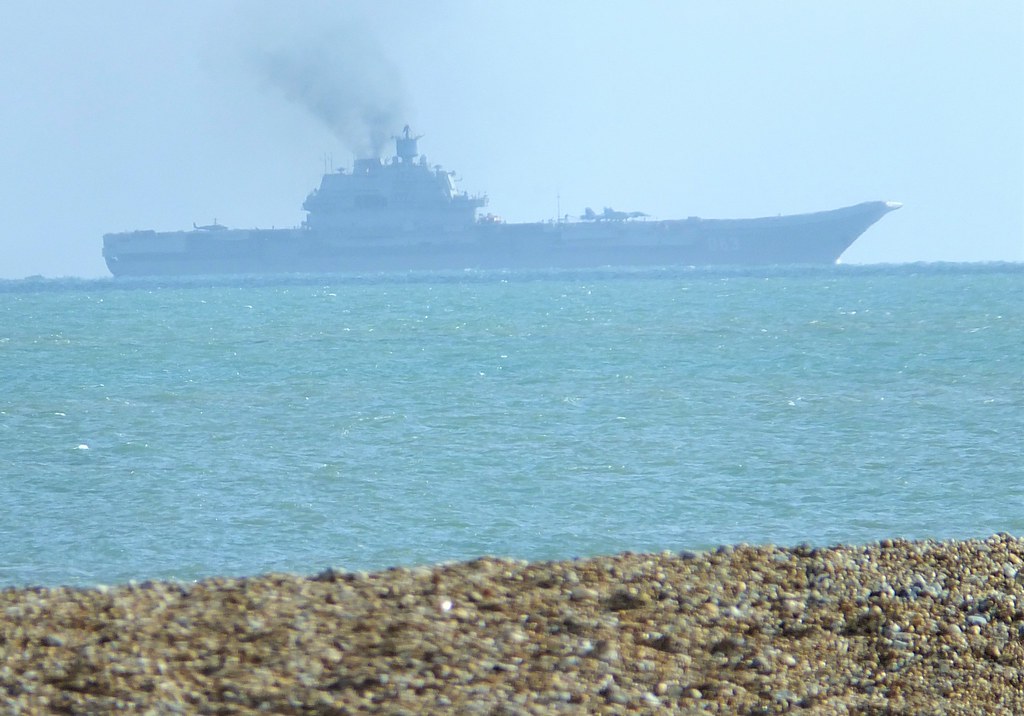
In the shadows of the ongoing conflict in Ukraine, the state of the Russian navy’s flagship, the Admiral Kuznetsov, is becoming increasingly emblematic of the broader challenges facing Russia’s military capabilities.

Originally launched in 1995 with more modest aspirations than its American counterparts, the Admiral Kuznetsov is now a beacon of obsolescence, bogged down by aging technology, a string of mishaps, and a series of delays in its long-overdue refit.

The crux of the matter lies with the Kuznetsov’s propulsion system. It’s powered not by nuclear reactors or advanced gas turbines, but by Mazut, a viscous, tar-like fuel substance that fell out of favor in the latter half of the 20th century. Mazut’s high-energy ratio was its selling point, but its drawbacks are numerous and significant.

This outdated fuel source renders the Kuznetsov visible from miles away, betraying its position with billowing black smoke. This is further aggravated by the fact that this heavy cruiser can only sustain 45 days at sea without refueling, a stark contrast to nuclear-powered counterparts that can operate for decades without the need for refueling stops.

Beyond its antiquated fuel system, the Admiral Kuznetsov suffers from a host of mechanical and structural issues. The ship’s steam turbines and boilers are notoriously unreliable, often requiring the assistance of tugboats in case of a breakdown—an embarrassment for a vessel of its stature. “One seaman died when the carrier caught fire during a 2009 deployment to the Med.

During the same cruise, the flattop spilled hundreds of tons of fuel into the sea while refueling,” recounts defense writer Robert Beckhusen.

The ship’s track record is plagued by accidents, including a deadly fire in 2019 and a crane crash that punctured a 16-foot-wide hole in its hull.

The design of the Kuznetsov also limits its military effectiveness. Unlike modern carriers that employ catapult systems for launching aircraft, the Kuznetsov relies on a bow ramp, which restricts the weight and thereby the fuel and ordnance aircraft can carry.

This severely hampers its primary role: to launch fighters capable of projecting Russian air power.

Despite the Kuznetsov’s many flaws, Russia is hesitant to retire the vessel. The ship hasn’t sailed since 2017, due to a series of repairs intended to add another 25 years to its service life.

Yet the repair process has encountered numerous delays, and it’s unclear if the carrier will ever sail again. According to a state-run news outlet, “factory sea trials of the aircraft carrier should begin in the spring of 2024,” with the potential for further delays.

As Russia faces economic sanctions and struggles to modernize its military equipment and strategies, the Kuznetsov stands as a symbol of the nation’s naval and military predicament.

While efforts are underway to develop two Ivan Rogov-class amphibious assault ships, which could serve as light aircraft carriers, the current state of affairs suggests that any significant enhancement of Russia’s carrier capabilities is unlikely in the near future.

The Kuznetsov’s cursed existence—marked by mechanical failures, construction defects, and severe accidents—mirrors the broader difficulties of a military trying to maintain relevancy with outdated and failing equipment.

In a world where military prowess is increasingly defined by technological sophistication, the Admiral Kuznetsov is a stark reminder of the pitfalls of failing to adapt and evolve.
Relevant articles:
– Admiral Kuznetsov: Russia’s Last Aircraft Carrier Is A Bad Dream That Won’t End, The National Interest
– Admiral Kuznetsov: 5 Reasons Russia’s Only Aircraft Carrier Might Be Doomed, nationalinterest.org
– Russia’s Admiral Kuznetsov Aircraft Carrier Nightmare Is Here To Stay, The National Interest
– Admiral Kuznetsov: Is Russia’s Only Aircraft Carrier Cursed?, Popular Mechanics
